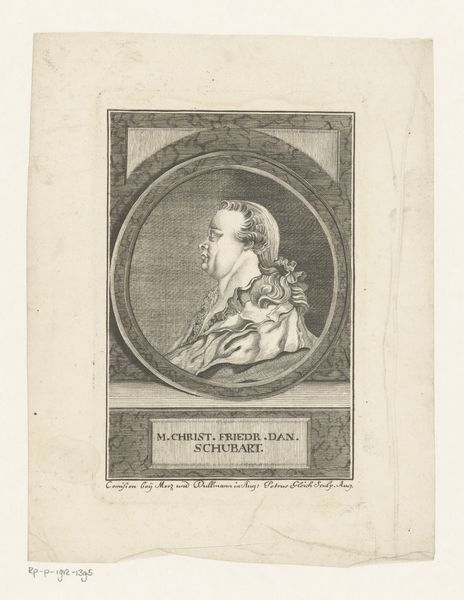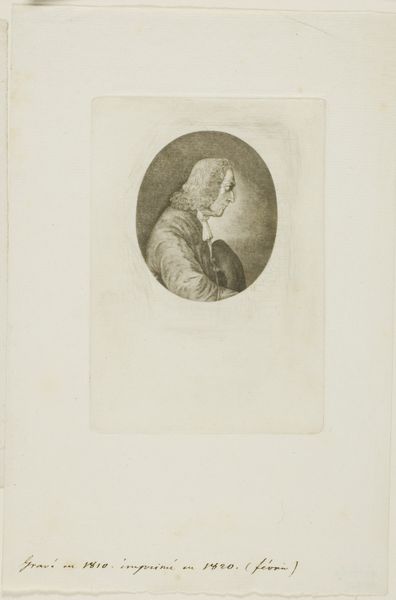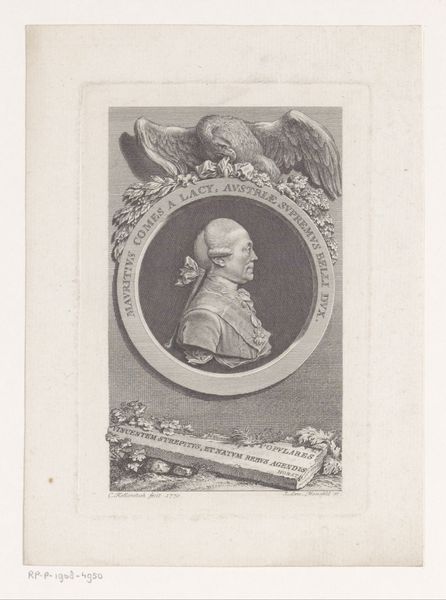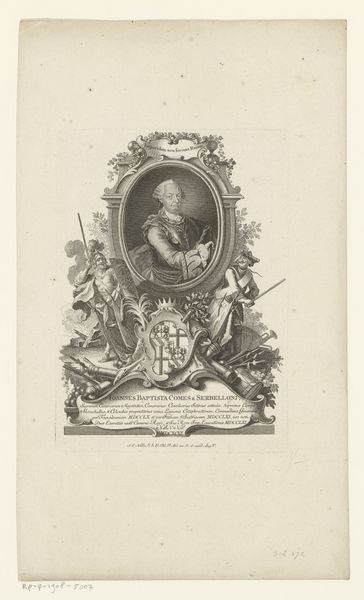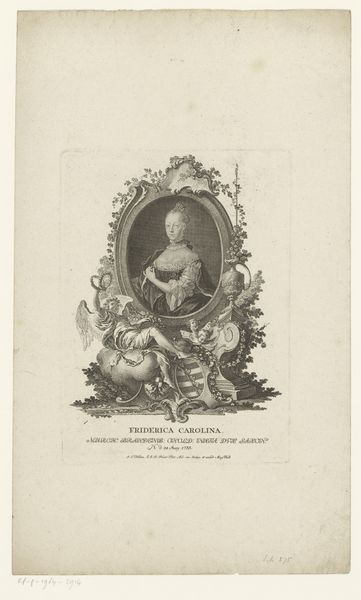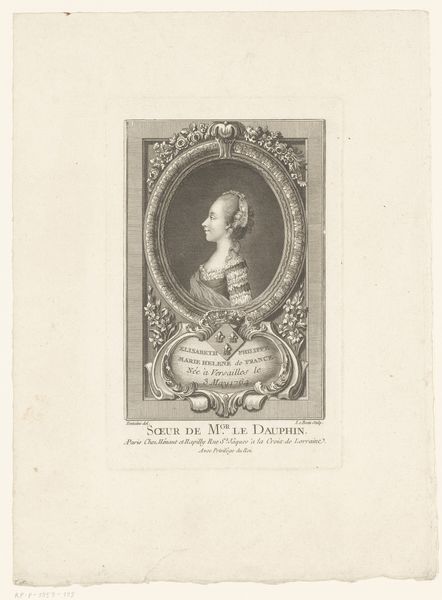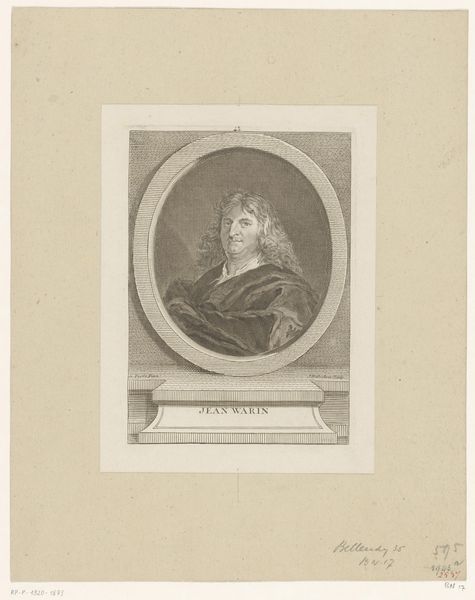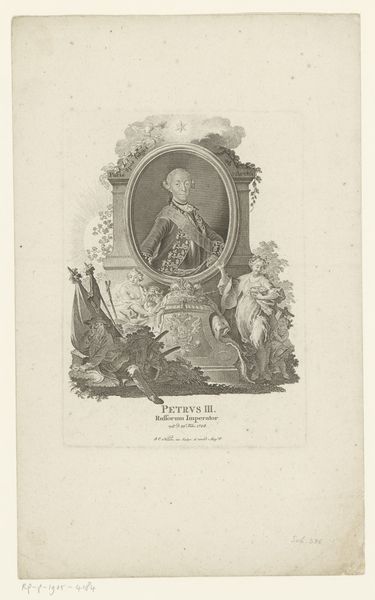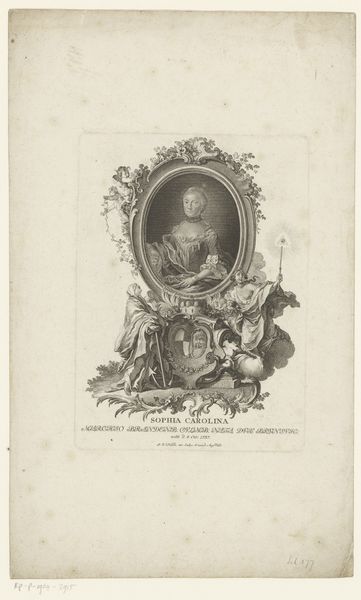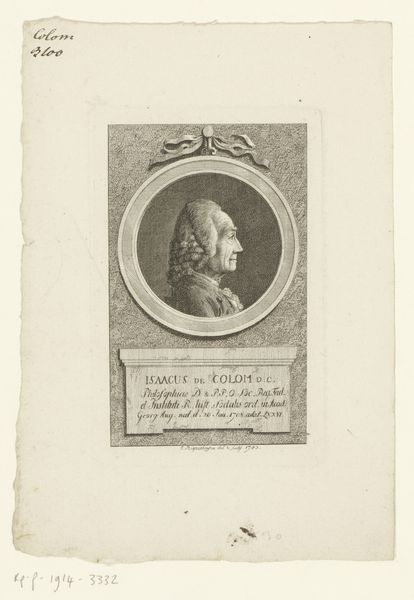
engraving
#
portrait
#
neoclacissism
#
old engraving style
#
19th century
#
history-painting
#
engraving
Dimensions: height 170 mm, width 106 mm
Copyright: Rijks Museum: Open Domain
Carl Hermann Pfeiffer made this print of Joseph II, Holy Roman Emperor, sometime around the turn of the 19th century. Note how the paraphernalia of monarchy – crown, scepter, and royal robes – are piled up beneath the portrait, transforming Joseph into an icon. But what kind of icon? Joseph was an “Enlightened Despot” who ruled the Austrian Habsburg lands from 1780 to 1790. He attempted to institute a series of radical reforms—abolishing serfdom, introducing religious toleration, and streamlining the bureaucracy. Many of these were rolled back after his death, suggesting the limits of top-down social engineering. But the image before us doesn’t invite speculation about policy. Instead, it presents monarchy as a thing—a collection of objects arranged for the purpose of veneration. It’s up to historians to reconstruct the complicated social and political conditions that made such images meaningful. A good place to start would be with pamphlets, newspapers, and other printed matter from the period.
Comments
No comments
Be the first to comment and join the conversation on the ultimate creative platform.

